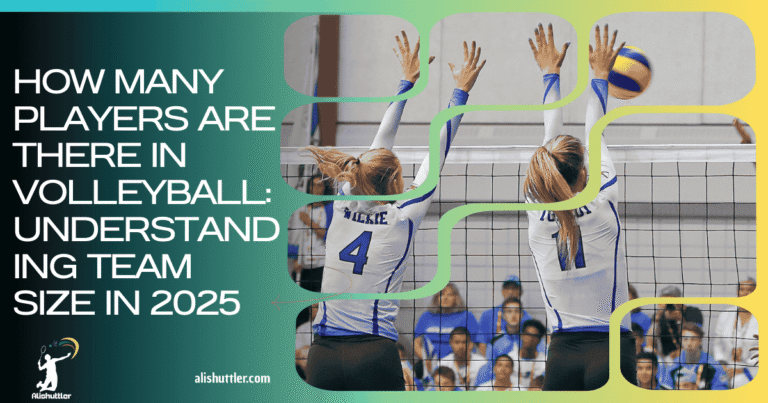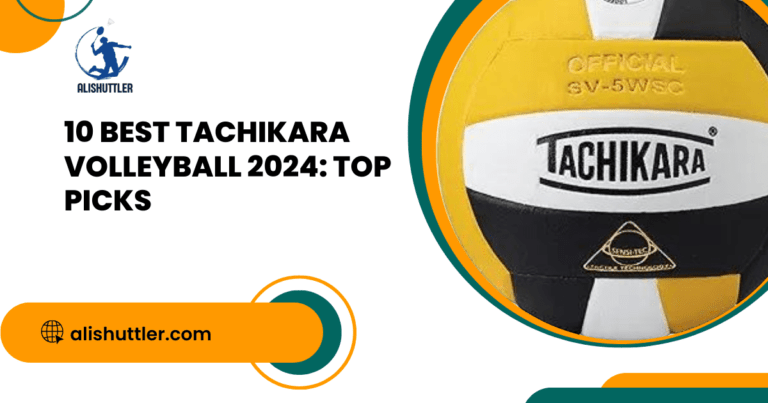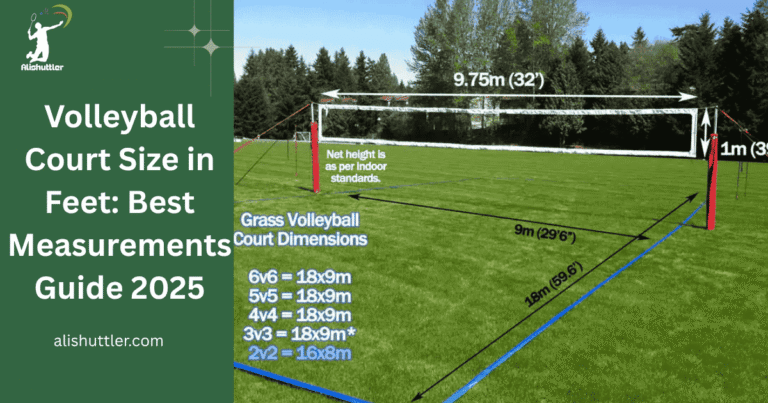The Dimensions of Sand Volleyball Court are 16 meters long and 8 meters wide for standard play. These court dimensions adhere to international standards and assist in maintaining the game equitable and uniform for all athletes.
The boundaries are marked with distinct lines, and the playing area should be kept free of obstructions. Understanding the precise dimensions assists in preparation for competition, practice, or recreational play.
The below sections describe court specifics and setup directions.
Court Specifications
A sand volleyball court is governed by meticulous specifications to maintain the fairness and safety of play. The regulation court measures 16m by 8m. For international matches, the court occupies a much larger playing field, with additional buffer space all around.
Net heights are 2.43 m for men and 2.24 m for women. We’re talking official setup here – exact line markings, demarcated boundaries, strategically placed poles. The table below shows the key measurements for reference:
| Specification | Official Value | Notes |
|---|---|---|
| Court Size | 16m x 8m | FIVB Standard |
| Net Height (Men) | 2.43m | Competitive Play |
| Net Height (Women) | 2.24m | Competitive Play |
| Free Zone | 5-6m (each side) | FIVB Recommendation |
| Total Playing Area | 26-28m x 18-20m | Includes Free Zone |
| Minimum Clearance | 7m (recreational), 10.5-12.5m (international) | Vertical space above the court |
1. Playing Area
The total playing area for a standard sand volleyball court encompasses more than just the court itself. FIVB suggests a playing area of 26–28 x 18–20 m, with the 8 x 16 m court centered inside. The additional room is critical to safety and fun.
A level, a smooth sand surface is essential for both good matches and player safety. The court has to be flat; otherwise, we would get injured, and the ball would move unfairly. Even small bumps and dips can alter the bounce of a ball or how a player lands.
Fans and benches require room as well. International events frequently bring additional space at the ends and sides for media, referees, and crowds. For two standard courts, the space required is 28m x 22m, while for two international courts, it’s 32-40m x 26-28m.
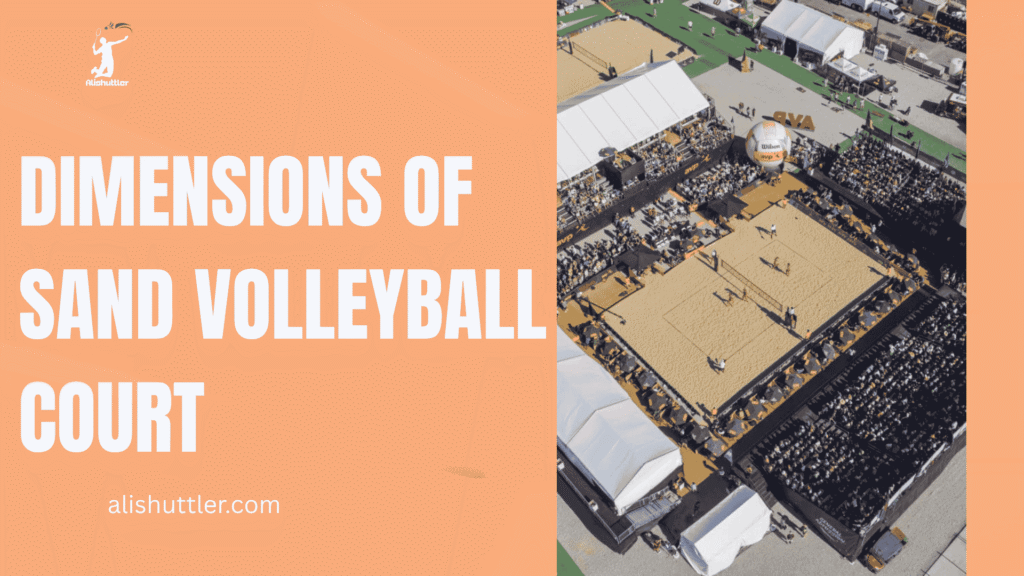
2. Free Zone
The free zone is the space surrounding the court that players may enter while playing, protecting them from striking objects or individuals. FIVB recommends at least 5-6 meters on all sides, allowing players to safely pursue balls.
A free zone that’s too small can cause injuries or missed plays. It restricts mobility, makes injuries more likely, and can prematurely end rallies. This distance assists with game flow, allowing players to dive, run, and react without concern.
A broad free zone is critical for large events with a large number of people and camera crews.
3. Net Height
For men, the net is 2.43 meters high. Among women, it’s 2.24 meters. These heights are typical of any high-level match.
That net height shapes how players block, serve, and spike. Higher nets require more jump and power, while lower nets shift how players form plays. For athletes, even a minor difference in height translates to having to reconfigure their training.
Adhering to these heights maintains the competition level and allows teams to play by the same rules across the board.
4. Line Markings
Each court has a center line, two sidelines, and two end lines. Exact indicators indicate whether the ball is in or out and which side serves or scores.
PP-Lines are constructed out of colored tape or rope, typically 2 inches in width. Vibrant color and excellent traction keep them visible and safe even if the sand shifts in play.
Good lines make for even calls and reduce on-court arguments. Only clear, visible lines keep matches smooth.
5. Pole Placement
Poles must be 10.5 to 16 feet, embedded in a concrete base one foot wide and 3 feet deep. They have to be seated 0.7 – 1m outside EACH sideline, not inside the court.
Firm poles keep the net taut and secure, preventing it from sagging or detaching. If they’re not set far enough, poles can cause injuries or interfere with play.
Strong, well-placed poles keep the game safe and fair for all.
Sand Requirements
A proper beach volleyball court not only requires specific sand volleyball sand depths but also the appropriate sand type and maintenance. Nailing these details ensures the court remains safe, level, and playable for all competitive players.
Depth Calculation
All sand volleyball courts require a sand base at least 30 cm deep over the entire court surface. Several builders opt for even deeper layers—up to 60 centimeters—to provide additional security. Deeper sand cushions falls and prevents players from hitting the hard ground below.
To figure out how much sand you need, use this formula: Sand Volume (m3) = Court Length (m) x Court width (m) x Sand Depth (m). A regulation court (9 × 18 meters) with 30 cm of sand requires approximately 48.6 m3. Including a free zone surrounding the court translates into even more sand.
If the sand is too shallow, golfers can taste the base or even get injured. Even depth throughout the entire surface is essential. Uneven sand can roll ankles or cause surprise bounces. Flatter, deep sand sustains swift moves and gentle descents.
Sand Type
The optimum sand for volleyball courts is clean, washed, and virtually dust-free. Search for smooth, rounded particles—these soothe the paws, flow well, and don’t hard pack. Angular sand can work, but it won’t drain as well or be as smooth.
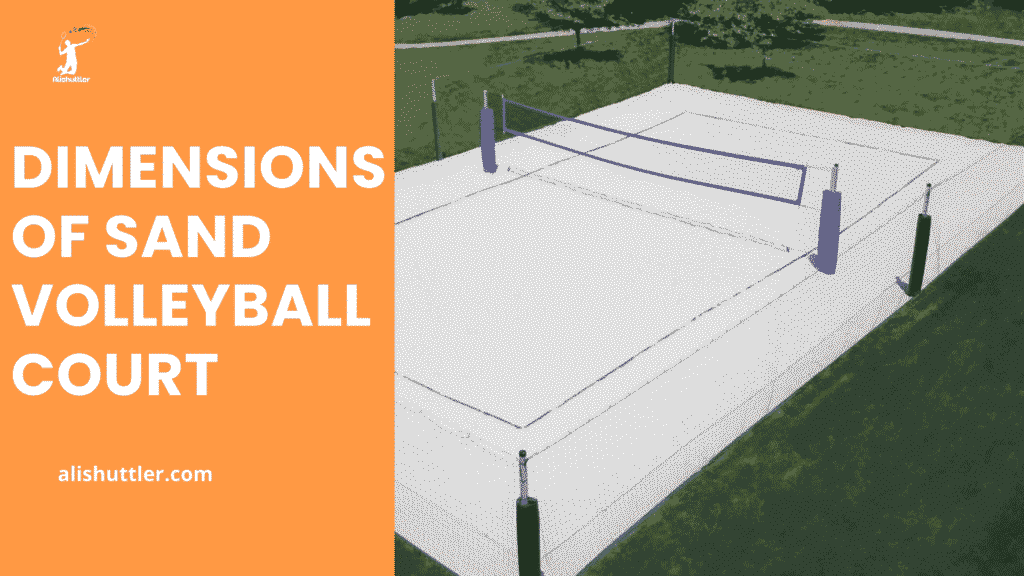
Don’t use sand with clay or silt, as this will retain water and create slippery spots. Sand quality = more fun and fewer scraped knees. Athletes depend on the sand for traction, but it must yield under force to avoid abrasions and contusions.
Poor quality sand is one thing, but cheap, dirty, or dusty sand results in uncomfortable play and can even get in eyes and lungs. Quality sand complies with sanctioned guidelines, which come in handy if you want to host tournaments or play by world standards.
Total Volume
A full-size court (9 × 18 m) with a 30 cm sand layer requires approximately 50 m³ of sand. That totals over 100 tons of sand. Most builders purchase 100 to 300 tons per court, depending on depth requirements and surrounding space for the court.
Checklist for Volume Calculation:
- Measure the court and free zone accurately.
- Decide on total depth (minimum 30 cm, often more)
- Calculate the full area, including extra buffer zones.
- Use the correct conversion for tons/cubic meters.
- Let it settle over time, so a little extra to begin with.
Too little sand, and you get hard spots and injuries. Too much sand can make movement hard. Getting the volume right helps create a safe, long-lasting court.
Maintenance and Drainage
Sand should be raked frequently to remain level and smooth. Rain can wash away sand, so a lot of courts use geotextile fabric underneath it to help hold it in place. Good drainage is required as well – standing water spoils games and can make the sand clumpy.
Eventually, sand gets yucky or sparse. Make sure to add fresh sand when necessary. Clean, deep sand translates into safer, smoother play.
Strategic Impact
Sand volleyball court measurements define all aspects of play. The standard beach court, 16×8m, is smaller than the indoor variant (18×9m). This gap alters how players run their offense, select their shots, and position themselves on defense.
Both the free zone—at least 3 meters wide around the edges—and net height, 2.43m for men and 2.24m for women, play key roles in match strategy.
Player Movement
Beach volleyball’s smaller court translates to players requiring more acute spatial awareness. Only two people per side, so they cover much more ground than indoor players. This results in increased running and frequent shifting, and rapid direction changes.
On sand, it’s slower and more exhausting, so players have to be prepared to turn on a dime from defense to offense. The requirement to guard the entire court ensures that everyone’s position counts.
By comparison, indoor volleyball’s six-player system allows teammates to occupy specialized positions – such as libero or setter – and operate in close quarters. Bigger court sizes make agility more crucial. Fast feet, anticipation, and precise foot placement are so important for staying ahead of the ball and partner, especially because sand delays your movements.
Experience in reading the ball and the opponent’s body language counts. Players who can speed-adjust their patterns of movement to the court’s precise dimensions frequently earn a strategic advantage.
Shot Selection
The court space has an immediate effect on shot selection in beach volleyball. With just two to a side, targeting open spaces is often the name of the game. Short shots, deep corners, and gentle drops over the buffer serve to take advantage of holes.
The smaller sand court, however, limits the angles and makes you more precise. Players need to balance risk and reward with each strike. On a larger indoor court with additional players, there’s more space for powerful spikes and crisp cross-court attacks, but more coverage as well.
In sand, the softer shots—like dinks—tend to be more effective, as defenders have farther to run. In addition, the attack line, which is marked at 3 meters indoors, is non-existent on the beach, altering how players approach the net and select their shots.
Familiarity with the court’s dimensions and markings helps players make smarter decisions both offensively and defensively. A timely serve or back-of-the-court shot can generate momentum. Court awareness is everything when it comes to scoring and stopping points.
Defensive Positioning
Defensive strategy is molded by court size. With reduced court dimensions but fewer blockers, beach players need to strike a balance between net play and back-court coverage. No liberos to fall back on, so communication and reading the play are key.
Spacing is all. If both players bunch up, they leave open areas for opponents to attack. If they disperse too far, fast hits can get through. Shifting position with every shot, depending on where the ball and partner are, is essential.
Tactics—such as alternating blockers or defenders—changed frequently, depending on the competition and court configuration. Teamwork and clear signals enable players to adjust to the court’s dimensions.
A mastered duo exchanges glances or quick whispers to arrange blocks and digs. It’s what comes from reading each situation and shifting together as a unit.
Competitive Advantage
Teams that know the volleyball court dimensions make every inch work for them. Understanding these dynamics leads to smarter, more effective play on the indoor volleyball court.
Dimensional Evolution
Sand volleyball court dimensions have evolved over the decades, reflecting changes in rules, volleyball players, and the game itself. Understanding these shifts allows players and coaches to appreciate the development of the game, the regulation beach volleyball court dimensions, and how calls shape the competition of today.
Historical Changes
Early sand volleyball used indoor court dimensions: 9 m × 18 m. In 1996, the standard went to 8 m × 16 m, which made matches quicker and more about skill than endurance. With net heights increasing—ultimately to 2.43 m (men), 2.24 m (women)—taller players enjoyed an advantage, particularly when spiking and blocking.
The transition from sideout to rally scoring, where every serve matters, accelerated games and altered tactics. Antennae were introduced to ball boundaries above the net, and 5 cm wide court lines were standardized, assisting referees in making definitive calls. These milestones, excerpted in the table below, have defined how sand volleyball courts are structured and utilized.
| Year | Change | Impact |
|---|---|---|
| Pre-1996 | 9 m × 18 m courts | Slower, endurance-based play |
| 1996 | 8 m × 16 m adopted | Quicker rallies, skill focus |
| 1996 | Net height increased | More intense aerial play |
| 1999 | Rally scoring introduced | Faster games, new tactics |
| Ongoing | Antennae and sidelines standardized | Clearer rules, fairer matches |
Rationale
The primary motivation for shrinking the court was to make games more exciting. The smaller court size means less ground for each team to cover, which places a premium on speedy movement and snappy reflexes. Raising the net also contributed, benefiting exceptional jumpers and causing spikes difficult to block.
These decisions were not only for top-tier athletes, but to even the playing field of enjoyment and fairness at every level. Competitive and casual play alike enjoy defined, reliable court dimensions.
Safety was an excuse for mutations. Oversized courts can exhaust players quickly, increasing injury risk. A fixed net height for men and women, say, 7 ft 11 5/8 inches, levels the playing field, even as it rewards different strengths.
Standard courts ensure we all practice and play by the same rules — critical for fair competition.
Modern Standards
Today’s professional sand volleyball court is 8 m wide by 16 m long. The net measures 2.43 m for men and 2.24 m for women. The court lines remain 5 cm wide, and antennae span 80 cm above the net to delineate lateral boundaries of play.
These standards simplify the construction of courts that serve both everyday play and worldwide competition. Uniform standards ensure that every athlete, regardless of their location, can train on courts comparable to those at elite tournaments.
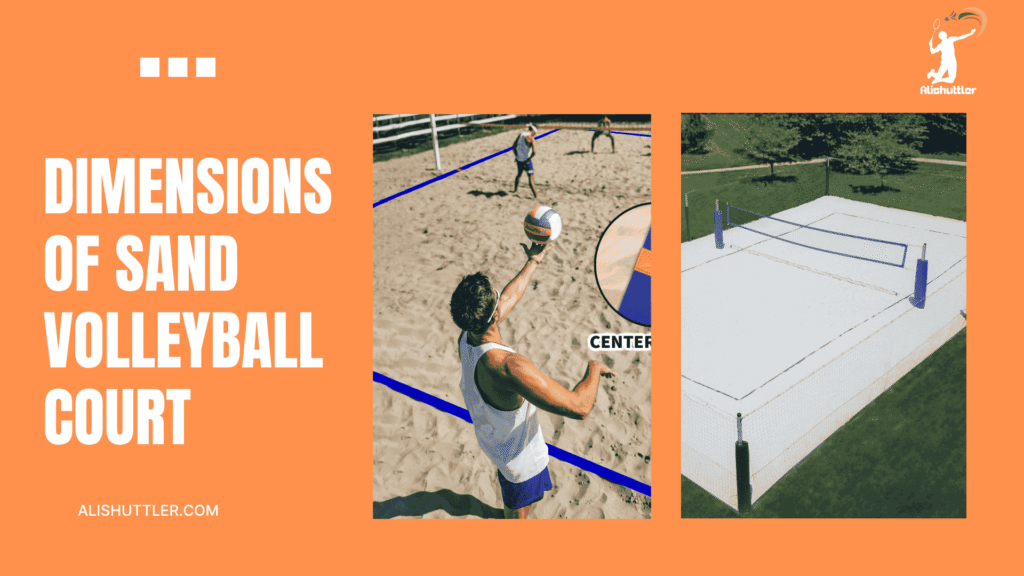
That aids coaches in training planning and players in building skills that translate between local and global competitions. For builders or maintainers of courts, familiarity with the proper sizes is time-saving and error-avoiding.
Court Variations
Sand volleyball courts vary greatly depending on the number and intensity of play. The court’s dimensions and configuration influence not only the regulations but also the very experience and mechanics of play at all levels as well. Being familiar with these variations assists players, coaches, and organizers in laying the groundwork for an equitable and enjoyable game.
- Professional: Courts with exact, regulated measurements for elite competition
- Recreational: Courts set up for casual play, often with a flexible size
- Training: Courts adjusted for drills and learner needs, not always full size
- Youth: Smaller courts to match kids’ age, skill, and safety
- Modified: Spaces in schools or gyms that fit what’s on hand
Court size influences game speed, what strategies are effective, and what skills are most important. Less running, quicker points, and a different emphasis on teamwork or power with smaller courts. Bigger or official-size courts allow players to utilize more space and challenge their physical fitness.
For teams and leagues, selecting the appropriate court type equates to skill-matched games, a safe environment, and an opportunity for players to understand and enjoy the sport.
Professional
Professional sand volleyball courts have stringent regulations. Generally, the recognized length for a two-player beach court has been 16 meters long and 8 meters wide (52.5′ x 26.25′). No attack line, and the free zone around the court must be a minimum of 3 meters to maintain safe play. Big tournaments like the Olympics and the World Tour always use these.
With a standardized court size, all athletes have the same playing field, so skill — not the space — determines the winner. On a pro court, players count on quickness and teamwork.
Top-level games require these fixed sizes to contrast stats, practice meaningfully, and maintain matches balanced globally. Any event wishing to be sanctioned must employ these very numbers, or risk chaos and imbalance.
Recreational
Most recreational sand volleyball courts stay pretty near professional specs, but there’s flexibility. Most public courts adhere to 16m x 8m for 2v2. Certain parks or community hangouts designate bigger zones or permit smaller complementary zones, as room can be limited.
For pick-up games, court size may vary to accommodate the group, location, or abilities. Courts in schools or gyms could be as small as 12.8m x 6.1m (42ft x 20ft) – particularly for younger or mixed-skill groups.
Small courts = less running, more opportunities to score & easier games for beginners. This helps ensure that everyone gets to participate, learn, and have fun.
Training
Training courts rotate dimensions to accomplish objectives. Coaches frequently shrink the court anyway, whether to hone skills, emphasize quick moves, or conduct drills. One court for juniors or novices may be only 16m x 9m (52ft 6in x 29ft 6in), whereas others modify the net or lines for unique abilities.
Switching up the court prepares players for actual games. Players learn to run, cover, and play as a team. Practicing on courts similar to those you’ll face in competition translates into fewer surprises and flow when it counts.
Why Court Variations Matter
Court size affects how volleyball players play and learn; little courts suit junior or novice players, ensuring the right dimensions keep games safe, fair, and fun.
Beyond Geometry
Sand volleyball court design isn’t simply about the volleyball court dimensions and the lines on a tape measure. The proximity of the walls, the beach volleyball sand beneath the feet, and even the open air overhead all color the play and protectiveness of the game. We obsess over every detail so our volleyball players can move, jump, and dive with abandon.
Environmental Factors
Wind, sun, rain, and even temperature can dictate the construction and maintenance of a sand volleyball court. Courts in windy locations might require additional barriers or windbreaks, whereas those in warm regions typically benefit from deeper sand or regular watering to maintain a cool surface.
Sunlight direction is significant as well, as glare can impact players’ vision and performance, particularly in afternoon matches.
- Select a well-drained site.
- Make sure the court has adequate sunlight but not too much glare.
- Avoid trees and poles that can drop debris or obstruct space.
- Reserve sufficient open space for the free zone and secure circulation.
- Figure out convenient sources of water or shade to cool off.
Choosing the perfect location for a court means less aggravation down the road. Maintenance is crucial. Wind could blow away sand, rain could form pits, and loose debris could slip. Courts require frequent raking, sand resettling, and debris removal to maintain a safe and equitable playing surface.
Surface Interaction
Sand alters the way players run. Fine, loose sand impedes footwork and makes jumping difficult, while coarse sand provides more grip but can be rough on bare feet.
1.5 to 3 feet of depth is required for even support and to minimize the risk of cuts or scrapes. The incorrect sand can temper the speed of a match or cause injury.
Surface quality has to do with fair play. Even sand lets players dig and dive without landing on a rock-coated pit. Good sand is good for avoiding ankle twists and knee strain. Bad sand, or sand that’s too shallow, creates an uneven footing and can cause injuries.
Too much shifting or tightly packed sand can increase injury risk. Diligent checks, raking, and new sand maintain the surface perfectly suited to play. The material itself counts—washed, round sand grains are less likely to compact down or retain water, providing a more secure, smoother touch for players.
Player Safety
A safe court is more than soft landings. The free zone, at least 3 meters wide, allows players to pursue the ball without falling over objects. Space above the court counts as well—a clearance of 12.5 meters or more ensures balls stay in play and protects players from overhead obstructions.
Net height and structure impact play—it should align with the level of competition and player requirements, providing a minimum of 3 feet from poles to sidelines to allow unobstructed movement.
They provide proper court size and sand depth to prevent injuries before they occur. Even just the occasional sweep for glass, rocks, or uneven spots makes a big difference. A lot of clubs and leagues have hard regulations for daily rake and sand checks, so that nobody gets injured during a match.
Holistic Approach
building goes beyond lines and nets. From sand to sky, every part defines the entire game. No one element operates in isolation.
Every decision supports the larger strategy. Little modifications can equate to more secure, more equitable playing for everyone.
Final Thoughts on Dimensions of Sand Volleyball Court
Sand volleyball courts unite. The dimensions of the court determine the style of play. Sand quality and depth maintain every footfall secure and level. Court lines establish the tempo and rhythm of action. Minor adjustments for court dimensions alter team dynamics and team flow. Old and new court shape fans. A few locations have customized dimensions for local requirements or entertainment. A good court is more than lines in the sand. It’s about obvious rules and fair play and that perfect player ‘feel’. To maximize play, verify your local rules and find out what fits your space. Whether to build or just play, know the sizes and choose the optimal configuration for your squad.
Frequently Asked Questions
What are the official dimensions of a sand volleyball court?
These are the volleyball court dimensions mandated by the FIVB for competition.
How deep should the sand be on a sand volleyball court?
The sand depth in beach volleyball courts should be a minimum of 40 cm, ensuring safety for volleyball players by cushioning them from injuries.
What type of sand is best for volleyball courts?
Clean, fine, and loosely packed beach volleyball sand is best, as it reduces injury risks for volleyball players during competitive matches.
Are there different court sizes for recreational and professional play?
Yeah, fun courts can be different sizes, but pro courts always adhere to the regulation volleyball court dimensions of 16m x 8m.
Why are clear boundaries important on a volleyball court?
Defined lines on the volleyball court dimensions guarantee just competition and precise results, assisting players and refs in making accurate calls.
How do the court dimensions influence gameplay strategies?
Court size, particularly volleyball court dimensions, influences how teams position themselves, move around, and play their game. A little bit smaller court promotes lightning-quick reflexes and teamwork.
Can sand volleyball courts be used for other sports?
Sure, beach volleyball courts can, with a few tweaks, accommodate other sand-based sports like beach soccer or handball.

